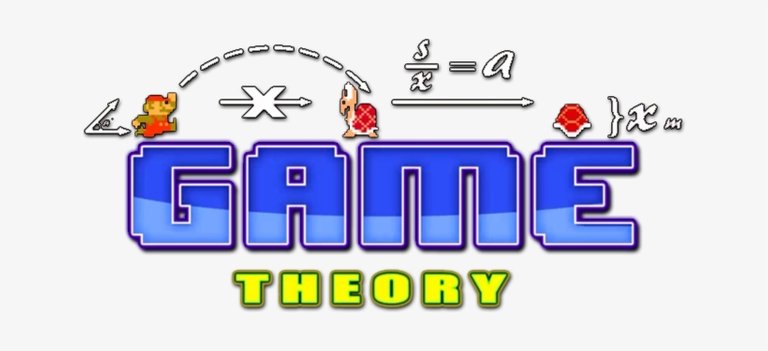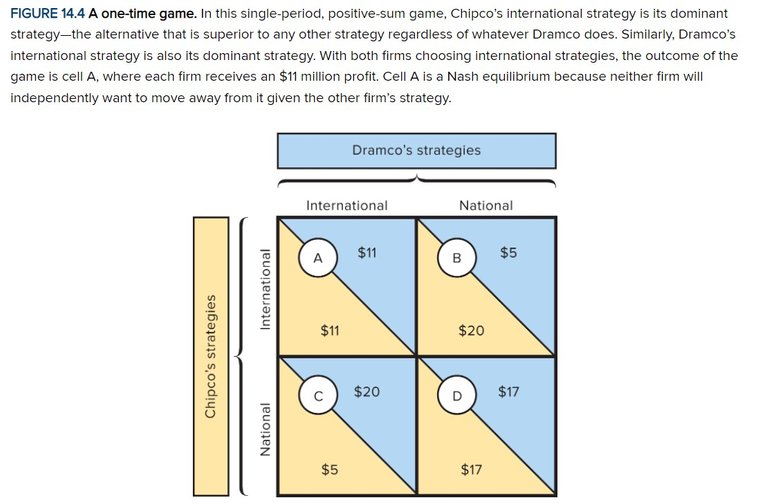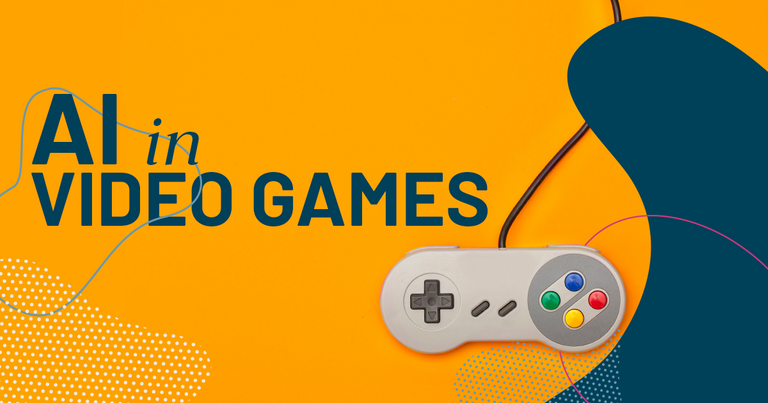An Introduction to Game Theory |EN/ES|

I received some questions when I published my previous post in this community about game theory in the game Rock, paper, scissors. So, I want to share with you some basic principles. We do not see it in the games we play, but they are built over pure mathematics. The number of players, the options of action available, and the possible rewards; it all forms part of a big design that uses numbers, formulas, probability, and statistics to give us the experience. It is usually applied in economics, but it has spread since then to many fields like technology, videogames, politics, and more. In this post, I share a brief introduction to game theory.
When I started learning about game theory, it became clear that the study of all possible strategies from the parties involved in an event could be linked and used in this field to achieve prediction, and also optimization. Game theory recognizes three major components: players, strategies, and outcome. By knowing all possible moves from a player, the other ones try to anticipate it and lead the outcome to the most favorable payoff for them. It is similar to counting cards in poker; if you know which cards he might have, you can take actions with the cards on your deck and obtain the best possible outcome: win the game.
Recibí algunas preguntas cuando publiqué mi publicación anterior en esta comunidad sobre teoría de juegos en el juego Piedra, papel o tijera. Entonces, quiero compartir con ustedes algunos principios básicos. No lo vemos en los juegos que jugamos, pero están construidos sobre matemáticas puras. el número de jugadores, las opciones de acción disponibles y las posibles recompensas; todo forma parte de un gran diseño que usa números, fórmulas, probabilidades y estadísticas para brindarnos la experiencia. Suele aplicarse en economía, pero desde entonces se ha extendido a muchos campos como la tecnología, los videojuegos, la política y más. En este post, comparto una breve introducción a la teoría de juegos.
Cuando comencé a aprender sobre teoría de juegos, quedó claro que el estudio de todas las estrategias posibles de las partes involucradas en un evento podría vincularse y usarse en este campo para lograr la predicción y también la optimización. La teoría de juegos reconoce tres componentes principales: jugadores, estrategias y resultados. Al conocer todos los movimientos posibles de un jugador, los demás intentan anticiparlo y llevar el resultado a la recompensa más favorable para ellos. Es similar a contar cartas en el póquer; si sabes qué cartas puede tener, puedes realizar acciones con las cartas de tu mazo y obtener el mejor resultado posible: ganar el juego.

The variety of games respond of a wide range of scenarios analyzed from a mathematic perspective, and from that, core theories have been developed according to pattern and classification of such games. Mainly, there are cooperative and non-cooperative games. What helps us classify games is the components: number of players, strategies per player, number of pure Nash equilibria, sequential, zero-sum, etc. For instance, Sequential means that one player can only take action after the one does, and zero-sum stablishes the payoffs of the game. Some examples of games are the prisoners’ dilemma, battle of the sexes, dictator game, Kuhn poker, rock paper scissors, among others.
One of the most basic and first form of games is what the mathematicians define as a zero-sum game. The term Zero-sum refers to the fact that when one player wins the other one loses. It is usually represented using a matrix of possibilities, in my opinion, similar to a matrix created for variables on non-parametric statistical analyses. Here is an example with an economic application:
La variedad de juegos responde a una amplia gama de escenarios analizados desde una perspectiva matemática y, a partir de ahí, se han desarrollado teorías centrales según el patrón y la clasificación de dichos juegos. Principalmente, existen juegos cooperativos y no cooperativos. Lo que nos ayuda a clasificar los juegos son los componentes: número de jugadores, estrategias por jugador, número de equilibrios de Nash puros, secuenciales, de suma cero, etc. -sum establece los pagos del juego. Algunos ejemplos de juegos son el dilema de los prisioneros, la batalla de los sexos, el juego del dictador, el póquer Kuhn, piedra, papel o tijera, entre otros.
Una de las formas más básicas ye iniciales de juegos es lo que los matemáticos definen como un juego de suma cero. El término suma cero se refiere al hecho de que cuando un jugador gana, el otro pierde. Suele representarse mediante una matriz de posibilidades, en mi opinión, similar a una matriz creada para variables en análisis estadísticos no paramétricos. Aquí hay un ejemplo con una aplicación económica:

In the case of economics, an oligopoly is difficult to understand in term of possible outcomes, and so game theory is used to understand how firms of an industry would interact with each other knowing the possible strategies. In the example, both companies would gain greater profit by choosing strategy A (international). Now what actually happens is quite different and it respond to human behavior and player possibilities. A firm knowing its competitor raise its price would seek to do the opposite, not the same. So, the second firm lower prices seeking better revenue. The first company would try the same seeking higher revenue as well. Both firms end in a point of equilibrium in which both get a certain revenue though not the higher possible within the strategies available. This resembles the prisoners’ dilemma perfectly. In business, knowing what your competitors would do can give you the advantage. Anticipation to others’ moves can help a firm lead the game to its desired outcome: maximize profit or minimize loses.
En el caso de economía, un oligopolio es difícil de entender en términos de posibles resultados, por lo que la teoría de juegos se utiliza para comprender cómo las empresas de una industria interactuarían entre sí conociendo las posibles estrategias. En el ejemplo, ambas empresas obtendrían mayores beneficios si eligieran la estrategia A (internacional). Ahora lo que sucede en realidad es bastante diferente y responde al comportamiento humano y las posibilidades del jugador. Una empresa que sabe que su competidor sube su precio buscaría hacer lo contrario, no lo mismo. Así, la segunda firma baja los precios buscando mejores ingresos. La primera empresa también intentaría lo mismo buscando mayores ingresos. Ambas firmas terminan en un punto de equilibrio en el que ambas obtienen unos ingresos determinados, aunque no los mayores posibles dentro de las estrategias disponibles. Esto se parece perfectamente al dilema de los prisioneros. En los negocios, saber lo que harían sus competidores puede darle una ventaja. La anticipación a los movimientos de los demás puede ayudar a una empresa a llevar el juego al resultado deseado: maximizar las ganancias o minimizar las pérdidas.
Nash Equilibrium

One point of curiosity for me was to know the contribution of John Nash to game theory. In the previous example it is resembled: Nash equilibrium. It refers to an attainable condition in which the combinations of moves from a player cannot lead to better payoff if other players stick to their moves. This represents that a game that involves competition can be brought to a solution by choosing the strategies which will provide the better payoff and are known to all players. This means a player will choose a certain strategy and recognizes there is no other for a better payoff while the competitor does exactly the same. That combination, that payoff, that outcome is what is known as Nash Equilibrium. In the example above the equilibrium is defined by the strategy D which based on human behavior and economic self-interest it out best strategy A for a better payoff.
Un punto de curiosidad para mí fue conocer la contribución de John Nash a la teoría de juegos. En el ejemplo anterior se asemeja a: Equilibrio de Nash. Se refiere a una condición alcanzable en la que las combinaciones de movimientos de un jugador no pueden conducir a un mejor pago si otros jugadores se apegan a sus movimientos. Esto representa que un juego que implica competencia puede llegar a una solución eligiendo las estrategias que proporcionen la mejor recompensa y que sean conocidas por todos los jugadores. Esto significa que un jugador elegirá una determinada estrategia y reconocerá que no hay otra para obtener mejores resultados mientras que el competidor hace exactamente lo mismo. Esa combinación, ese pago, ese resultado es lo que se conoce como Equilibrio de Nash. En el ejemplo anterior, el equilibrio está definido por la estrategia D que, basada en el comportamiento humano y el interés económico propio, es la mejor estrategia A para obtener una mejor recompensa.
Application of Game theory
As stated in the beginning, the understanding of game theory could aid you in predicting or at least influencing an outcome. It could be applied to sports, gambling, apps’ algorithms, customer engagement, and investing. Knowing what a customer could do, and his strategies, could lead a business to create a campaign to guide the costumer through those strategies for a purchase. Now, it seems to go beyond that, and it is incorporated in the analysis of several types of data.
An interesting application I found for game theory was to describe OPEC oil organization. Asikomurwa & Mohaisen (2015) explain that the prisoners' dilemma and the Cournot dilemma are exposed and used to explain how the oligopoly stablished by this organization works. Decisions are based on the known strategies of players specially related of quantities produced. As stated by Choia et al. (2020) “relevant applications of game theory include a vast area of industrial applications such as resources utilization, social issues such as sharing economy and sustainable operations, economic games played by firms under cooperation and competition situations, social games of fair distribution of resources in competitive situations, psychological games played on personal level, supply chain games happened among various industries, etc.”
Como se indicó al principio, la comprensión de la teoría de juegos podría ayudarlo a predecir o al menos influir en un resultado. Podría aplicarse a los deportes, los juegos de azar, los algoritmos de las aplicaciones, la participación del cliente y las inversiones. Saber lo que un cliente podría hacer y sus estrategias podría llevar a una empresa a crear una campaña para guiar al cliente a través de esas estrategias para una compra. Ahora, parece ir más allá y se incorpora al análisis de varios tipos de datos.
Una aplicación interesante que encontré para la teoría de juegos fue describir la organización petrolera de la OPEP. Asikomurwa & Mohaisen (2015) explican que se exponen y utilizan el dilema de los prisioneros y el dilema de Cournot para explicar cómo funciona el oligopolio establecido por esta organización. Las decisiones se basan en las estrategias conocidas de los jugadores especialmente relacionadas con las cantidades producidas. Como afirman Choia et al. (2020) “las aplicaciones relevantes de la teoría de juegos incluyen una amplia área de aplicaciones industriales como la utilización de recursos, cuestiones sociales como la economía colaborativa y las operaciones sostenibles, juegos económicos jugados por empresas en situaciones de cooperación y competencia, juegos sociales de distribución justa de recursos en situaciones competitivas, juegos psicológicos jugados a nivel personal, juegos de cadena de suministro que ocurrieron entre varias industrias, etc.”.

The real surprise was to find applications beyond business. Paté-Cornell (2012) introduces interesting and menacing situations a government could use game theory to study its strategies. For example, to prevent or limit mass productions of weapon in a country considered a risk to the nation. Three of the four examples are based on a thread the country receives and how the decision would be using a specific game dilemma for it. On a different field, I found the application of Nash equilibrium and game theory to geosciences. These concepts were incorporated in a model to study ground cover classification with hyperspectral imagery. The results outperformed others methods for such a task (Bruce, 2013).
The mentioned fields of application produce a “tip of the iceberg” feeling about the potential game theory can offer to many sciences. It is a multidisciplinary effort which could lead to better performance, optimization, higher profits, crucial decisions, unveiled insights in data, and prediction of outcomes. At the same time, those application validate the theories used in them. Mutual improvement through the combination of knowledge emerges.
La verdadera sorpresa fue encontrar aplicaciones más allá de los negocios. Paté-Cornell (2012) presenta situaciones interesantes y amenazantes que un gobierno podría usar la teoría de juegos para estudiar sus estrategias. Por ejemplo, para prevenir o limitar la producción masiva de armas en un país considerado un riesgo para la nación. Tres de los cuatro ejemplos se basan en un hilo que recibe el país y cómo la decisión sería usar un dilema de juego específico para ello. En un campo diferente, encontré la aplicación del equilibrio de Nash y la teoría de juegos a las geociencias. Estos conceptos se incorporaron en un modelo para estudiar la clasificación de la cobertura del suelo con imágenes hiperespectrales. Los resultados superaron a otros métodos para tal tarea (Bruce, 2013).
Los campos de aplicación mencionados producen una sensación de “punta del iceberg” sobre el potencial que la teoría de juegos puede ofrecer a muchas ciencias. Es un esfuerzo multidisciplinario que podría conducir a un mejor rendimiento, optimización, mayores ganancias, decisiones cruciales, información revelada en los datos y predicción de resultados. Al mismo tiempo, esas aplicaciones validan las teorías utilizadas en ellas. Surge la mejora mutua a través de la combinación de conocimientos.
References
Asikomurwa, V., & Mohaisen, M. (2015). Game theory and business intelligence in strategic business decisions- a review. International Journal of Advanced Computational Engineering and Networking. 3(8).
Barron, E. (2013)-Game Theory an Introduction. Editorial John Wiley & Sons, Incorporated. https://ebookcentral.proquest.com/lib/byui/reader.action?docID=1157719
Bruce, L. (2013). Game theory applied to big data analytics in geosciences and remote sensing. International Geoscience & Remote Sensing Symposium – IGARSS. 4094-4097.
Choia, T., Taleizadehb, A., & Yuec, X. (2020). Game theory applications in production research in the sharing and circular economy era. International Journal of Production Research. 58(21), 6660–6669. https://doi.org/10.1080/00207543.2019.1684593
McConnell, C., Brue, S., & Flynn, S. (2021) Microeconomics. 22 Edition. Mc Graw Hill. New York. 275-276.
Paté-Cornell, M. (2012) Games, Risks, and Analytics: Several Illustrative Cases Involving National Security and Management Situations. Decision Analysis., Vol. 9 Issue 2, p186-203.
Prisner, E. (2014) Game Theory through Examples. Editorial American Mathematical Association of America. https://ebookcentral.proquest.com/lib/byui/reader.action?docID=3330479 (Links to an external site.)
https://twitter.com/GaelJosser/status/1518084161151586304
https://twitter.com/Gameric12/status/1518242539727474693
The rewards earned on this comment will go directly to the person sharing the post on Twitter as long as they are registered with @poshtoken. Sign up at https://hiveposh.com.
Congratulations @gaeljosser! You have completed the following achievement on the Hive blockchain and have been rewarded with new badge(s):
Your next target is to reach 13000 upvotes.
You can view your badges on your board and compare yourself to others in the Ranking
If you no longer want to receive notifications, reply to this comment with the word
STOPCheck out the last post from @hivebuzz:
Support the HiveBuzz project. Vote for our proposal!